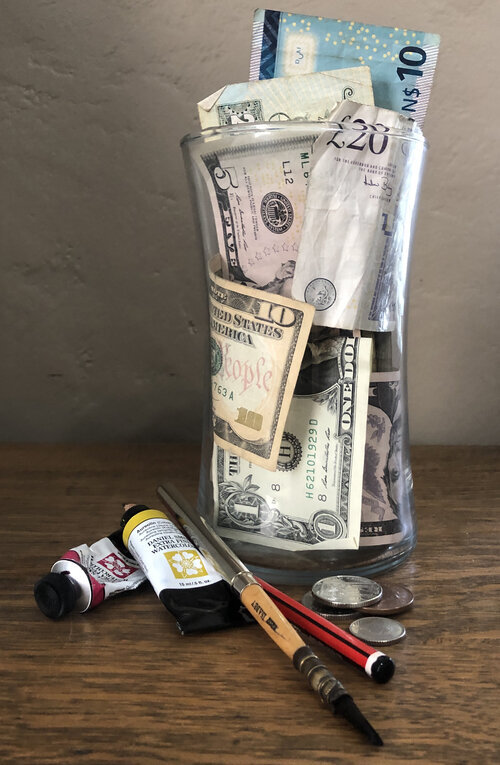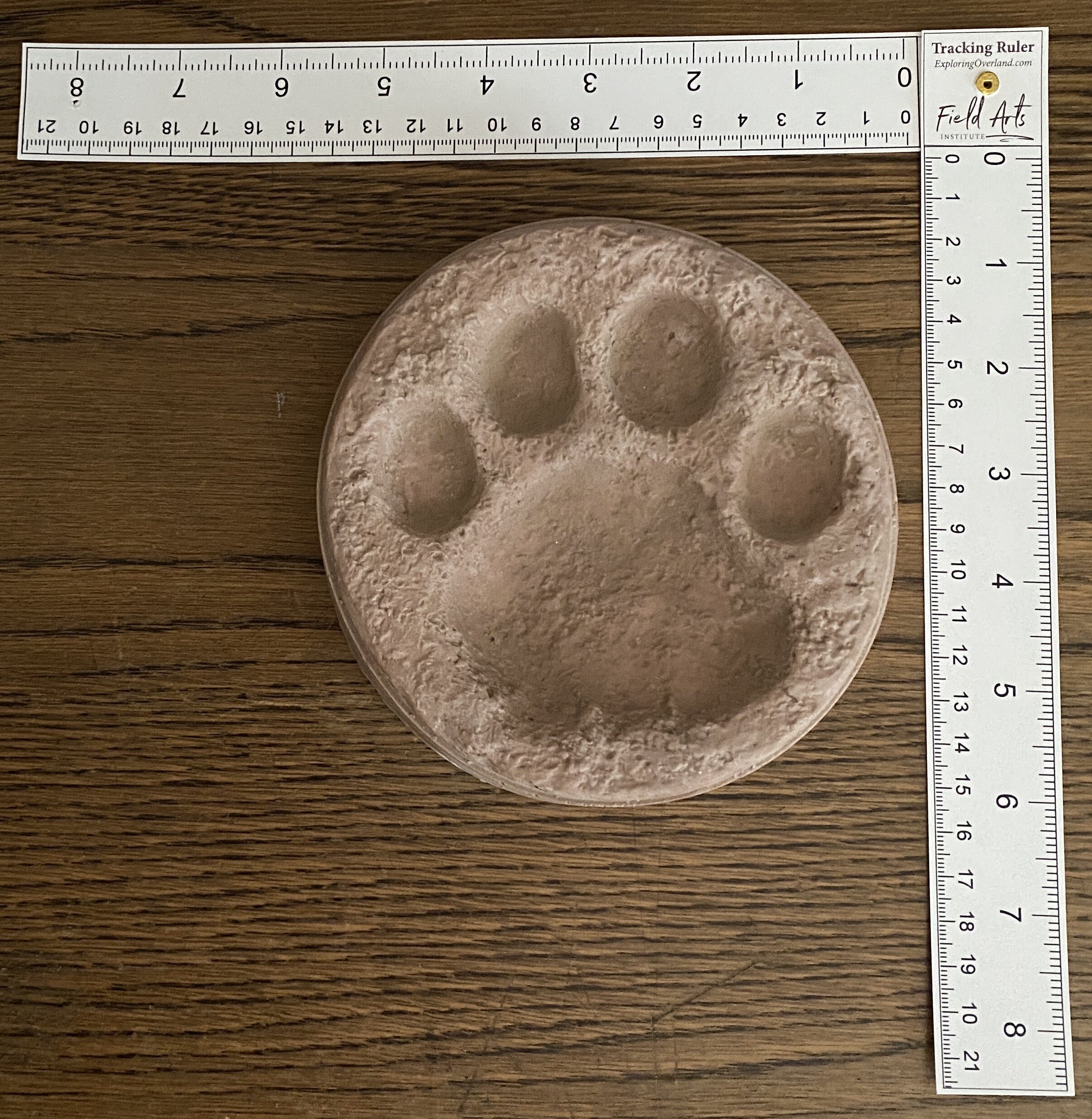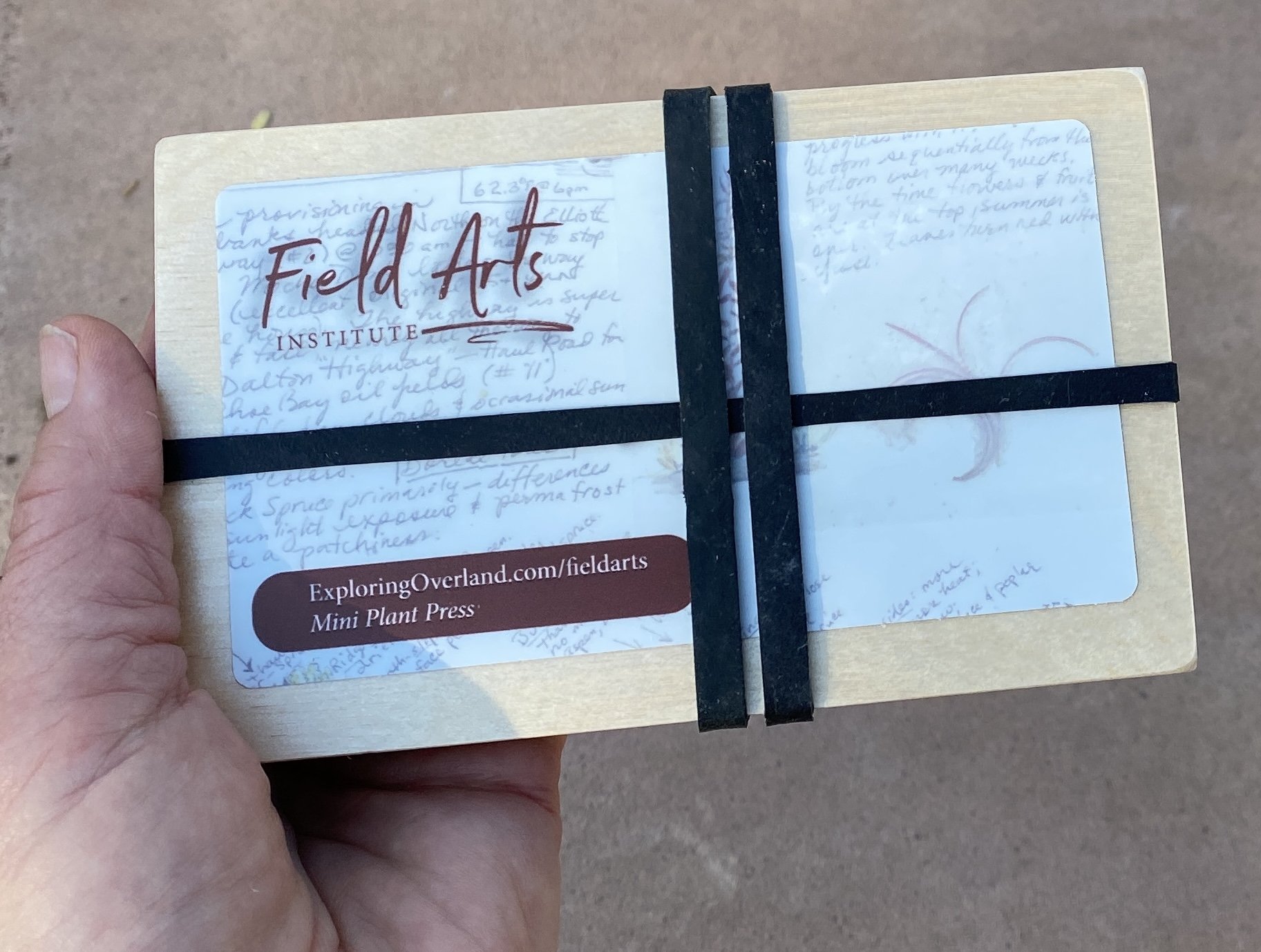Field Arts Workshop: Weather 101 for Field Notebooks
Creating a cloud ID chart is a great way to practice cloud-painting skills as well as to learn the main cloud types.
Metadata for your field notebooks is a crucial addition, to give your entries a solid foundation in context: date, time, sunrise / sunset, moon phase, and weather. Weather is fun to learn: What are the clouds? How do you ID them? How do you tell the wind speed? What are the symbols for recording weather?
In this free Field Arts tutorial, we will dive into learning about weather data, what is climate vs. weather, where weather forms and how, and how to ID clouds. Then we’ll create a cloud-chart that you can keep in your journal for future reference.
Length: 2 hours
Resources from the Workshop
pdf with all links and download link for images and ALL THE charts (CLICK IMAGE):
Click image to initiate download. Or, use: https://www.dropbox.com/sh/rvlzr0a9hezdgjr/AACw6pH9jwhj6sQ-rvmM_GGwa?dl=0
SUGGESTED PAINTS AND SUPPLIES:
Ruler and pencil
Pen with waterproof ink
And for the color, two approaches:
1) Traditional:
- watercolor paper (9x6 or larger), at least 90 pound
- cobalt or cerulean; these are pretty and wash easily, and also lift easily. French ultramarine is wonderful but does not lift as well and does granulate a little, so it will settle into the texture on your paper, which you may or may not like.
- burnt sienna to mix with your blue to create a nice gray for the clouds
- alternatively, shadow violet
OR
2) gouache:
- toned paper (dark grey or tan)
- gouache paint in white and blue and burnt sienna
I actually found the toned with white gouache to be much easier for this chart exercise!
You can find my list of minimalist colors and tips on color mixing here: https://www.exploringoverland.com/field-arts-tutorials-list/2020/7/5/minimalist-watercolor-for-nature-journaling
COLORS I DEMONSTRATED:
Manganese Blue (Old Holland)
Cyan (Greenleaf & Blueberry)
Cobalt (Daniel Smith)
Cerulean (Daniel Smith)
French Ultramarine (Daniel Smith)
Pthalo Blue (Green Shade, Daniel Smith)
Goache Set from Caran D’Ache (white, yellow, blue, red, burnt sienna)
This is the reference image for creating your own cloud chart for your journal.
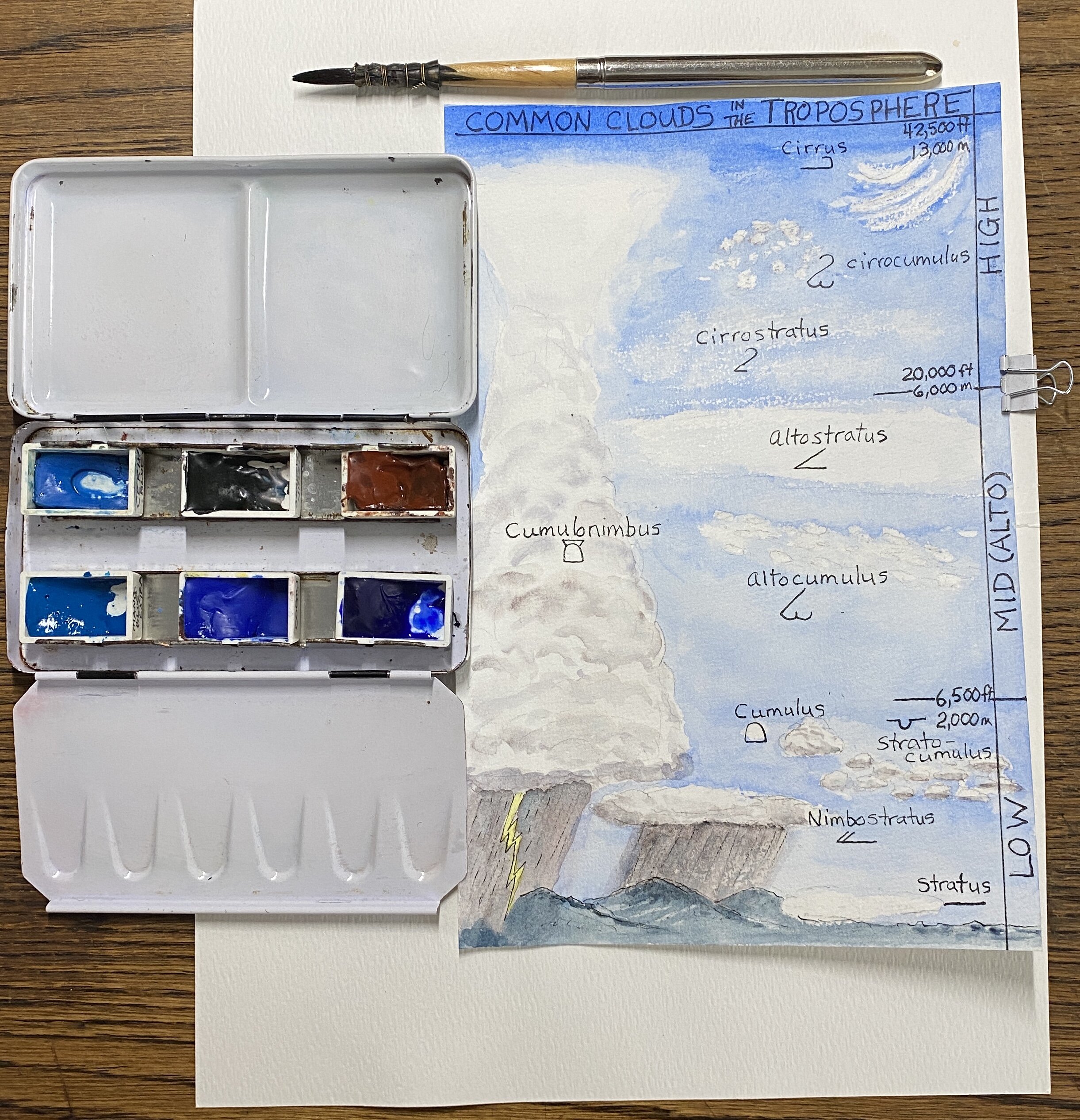
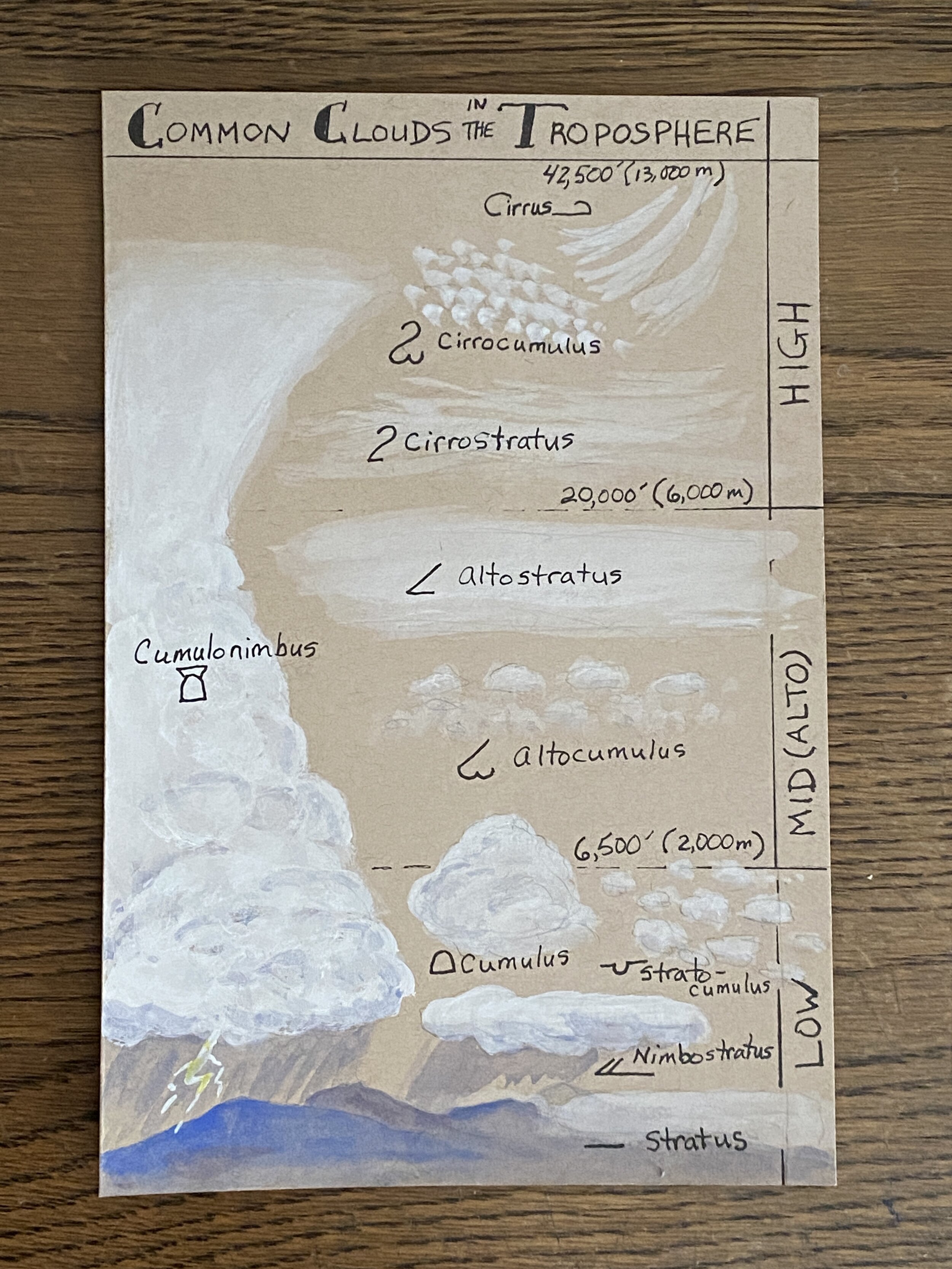
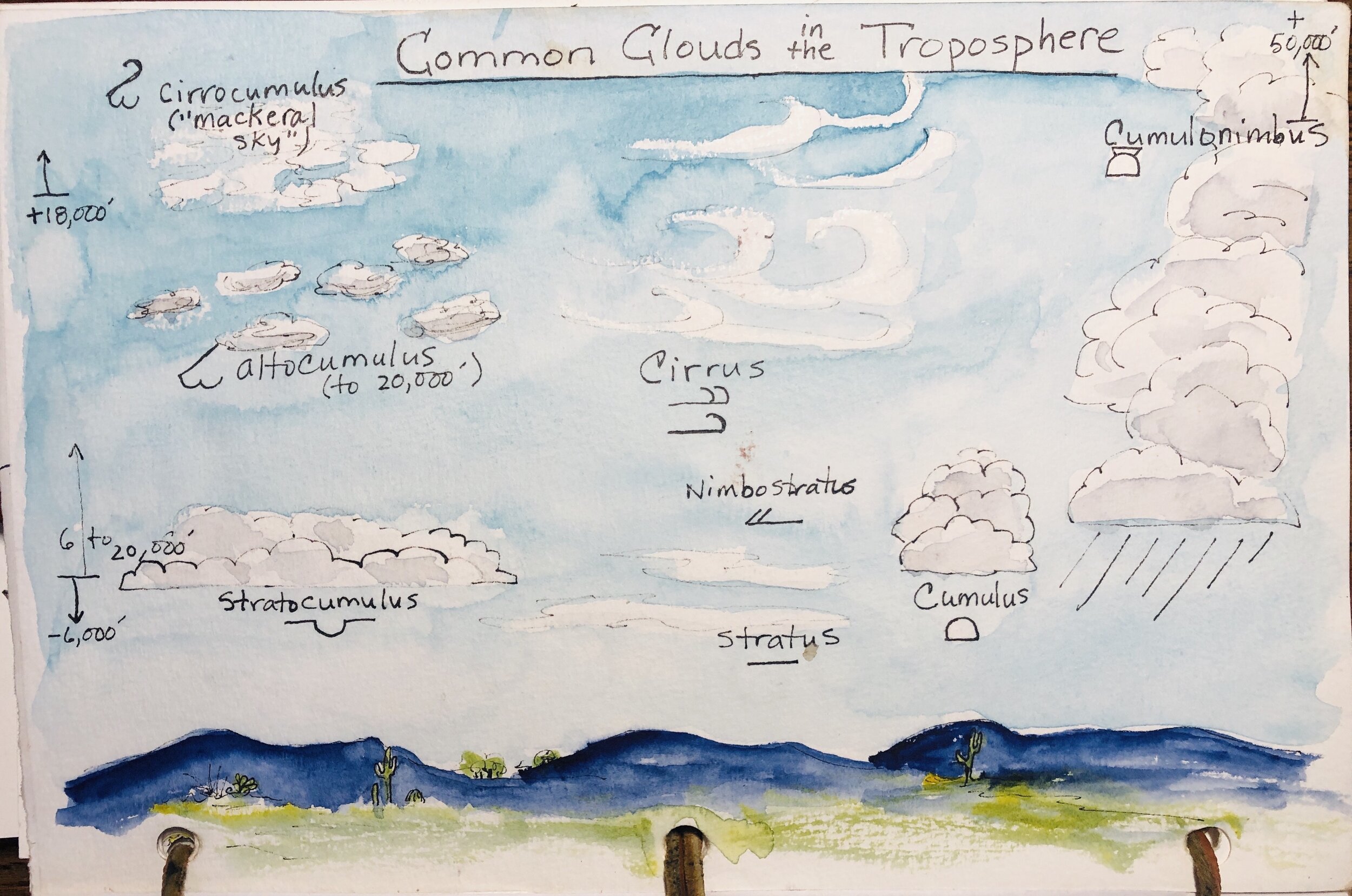
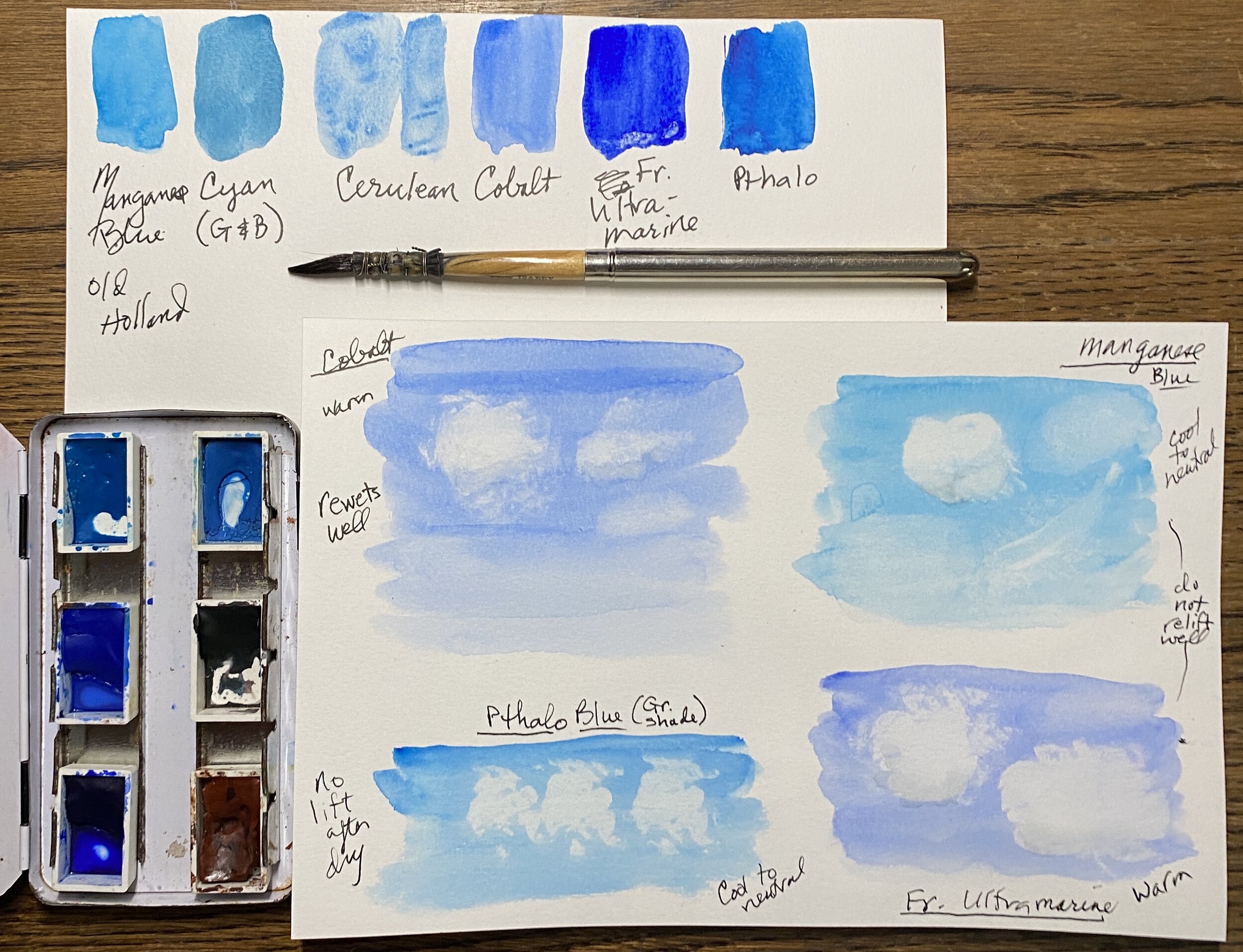
Field Arts Workshop: Animal Tracking 101 for Field Notebooks
Female lion and cub tracks, Great Rift Valley, Olkiramatian, Kenya (click to enlarge).
Join me for a free online workshop on the basics of animal tracking—and different ways to add them to your field notebooks and nature journals. I’ve spent 30 years tracking wildlife and teaching tracking for conservation groups, and my husband Jonathan Hanson and I wrote the Basic Essential Guide to Animal Tracking.
Learn how to quickly tell canine from feline tracks, domestic dogs from wild, different gait patterns, and how to “read” a track story.
I’ll also show how to use my clear Perspex Palette-Easel ) to trace a track, and a template for making your own unique track ruler, as well as a free Quick Tracking Tips card.
Length: 2 hours
SEE BELOW FOR
Resources from the Workshop
Perspex palette: Head out to your local hardware store such as Ace Hardware and they should have a section where they sell clear polycarbonate (perspex) sheets and will cut them to size for you. Price depends on size, but around $10. If you want to use the sheet as a holder for a metal paint kit, add a strip of magnet tape.
Or, you can order from my shop (there may be a delay in shipping these in March 2025). See below.
Here’s a free printable tracking ruler, or order the same plastic original one that I use in the workshop, from Sue Morse at KeepingTrack.org. Sue is one of my tracking mentors. Her book is amazing, and recently updated.
Downloads (Tracking Tips Bookmark and Tracking Ruler) — IMPORTANT: These will open in Dropbox; click the DOWN ARROW in the upper right (it’s small); a box will open trying to get you to sign in or sign up but click the sentence underneath that to Continue Without.
field guides:
“Basic Illustrated Animal Tracks” by Roseann and Jonathan Hanson https://www.amazon.com/Basic-Illustrated-Animal-Tracks/dp/1493017179
The two best deep-dive tracking training books:
Paul Resendez, “Tracking and the Art of Seeing” https://www.amazon.com/Tracking-Art-Seeing-Animal-Tracks/dp/0062735241
and Sue Morse, “Wildlife and Habitats” https://keepingtrack.org/keeping-track-store
Good in depth basic field guides:
“Scats and Tracks of the Desert Southwest” by James C. Halfpenny, illustrations by Todd Telander https://www.amazon.com/Scats-Tracks-Desert-Southwest/dp/1560447869
and
https://www.amazon.com/Mammal-Tracks-Sign-American-Species/dp/0811737748
Recommended in the chat:
Oldie but goodie: Animal Tracks by Olaus J. Murie, Peterson Field Guide Series. Love the line work and clear illustrations.
“Mammal Tracks & Sign” by Mark Elbroch
For kids: John Townsend “Life-Sized Animal Tracks”
Animal Tracks of Alaska by Sheldon and Hartson is a handy little guide to take with you, has info on many different animals including common birds and amphibians.
“Foundations for Awareness, Signcutting and Tracking” - Robert Speiden
John Rhyder’s Animal Tracks Field Guide (stipple drawings of tracks in United Kingdom) https://www.woodcraftschool.co.uk/books
Wild Tracks!: A Guide to Nature's Footprints - is another good kids book
Leslie Dendy’s “Tracks, Scats and Signs” (Take Along Guides)
ROSEANN’S DEMO PAGES FROM THE WORKSHOP:
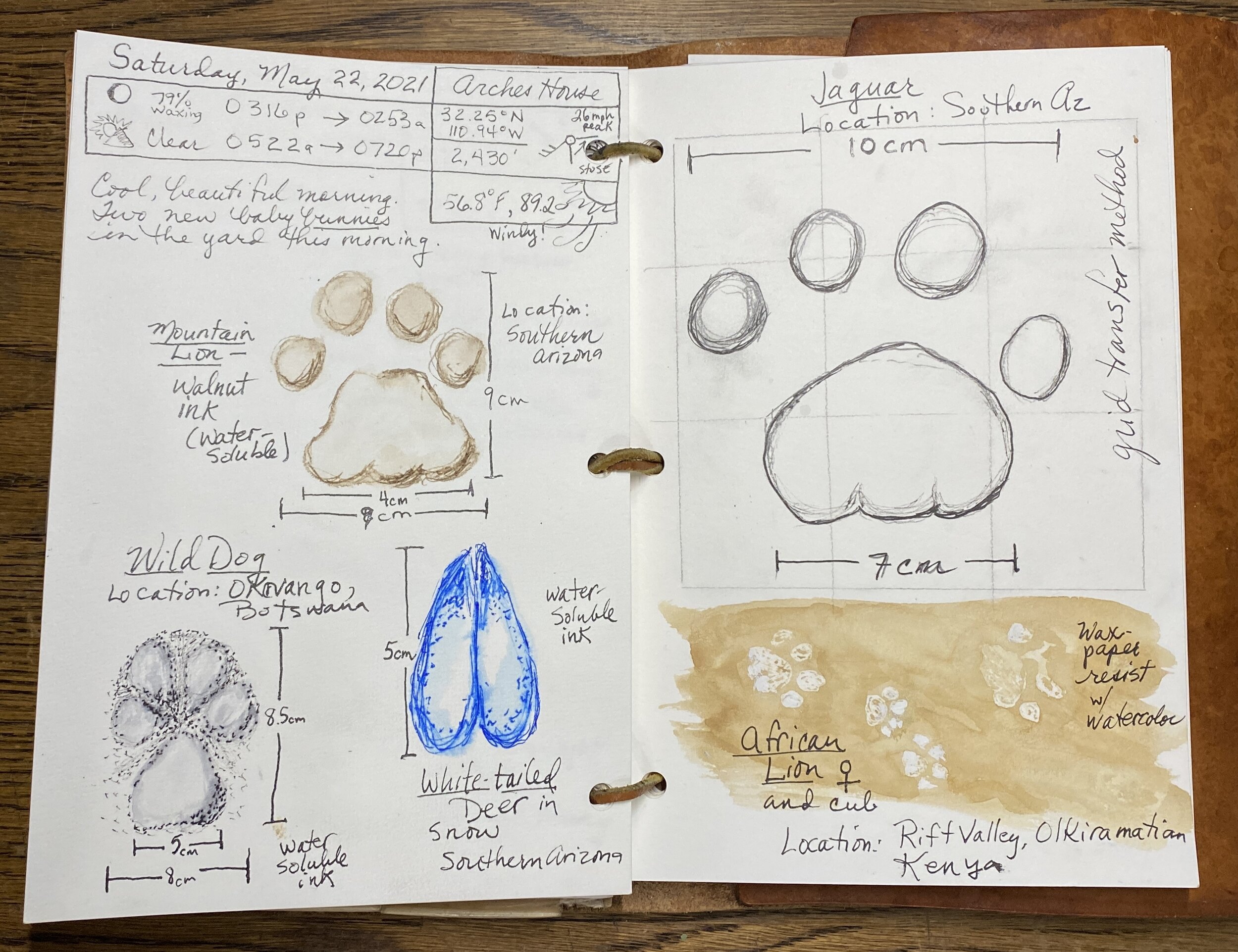
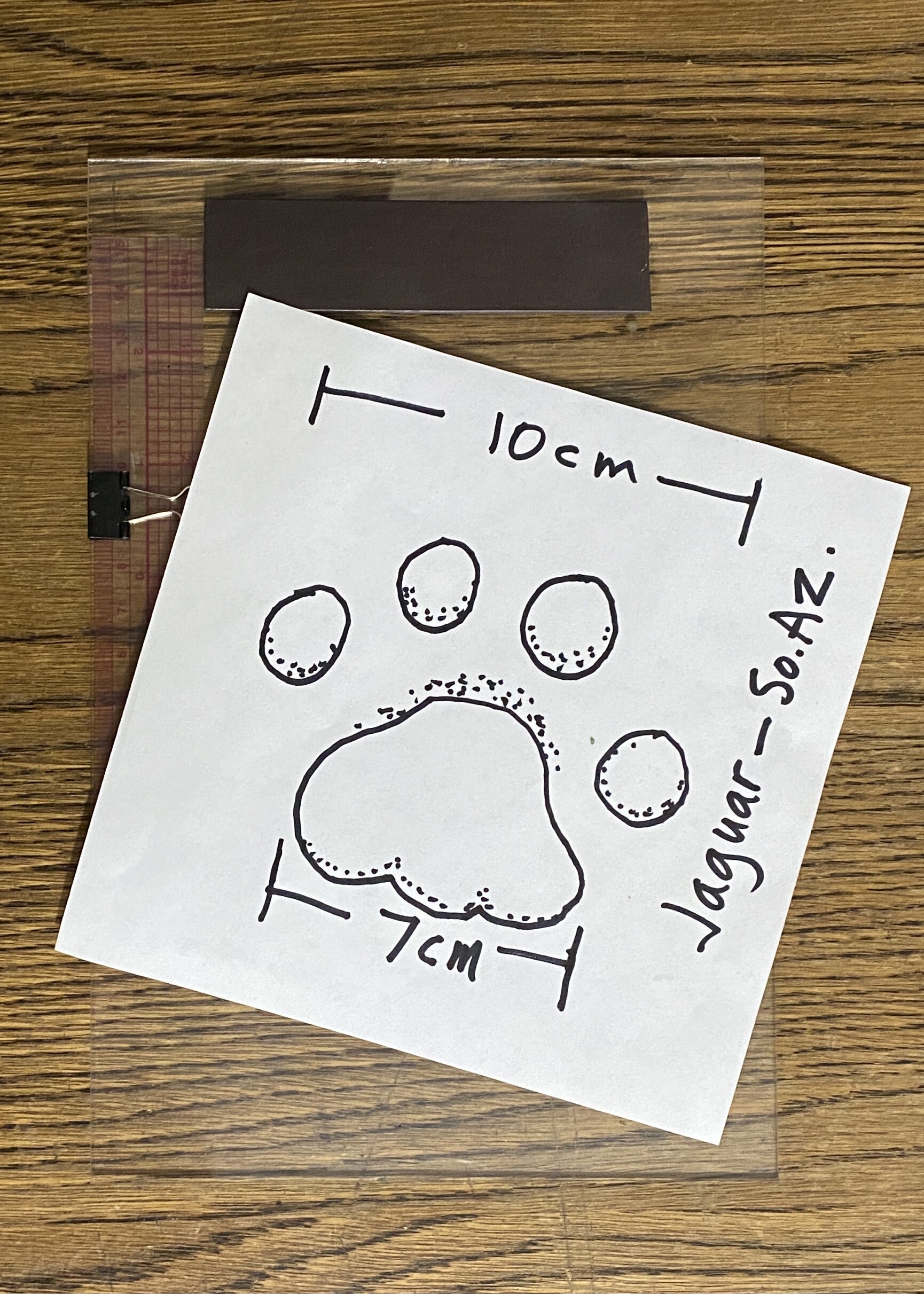
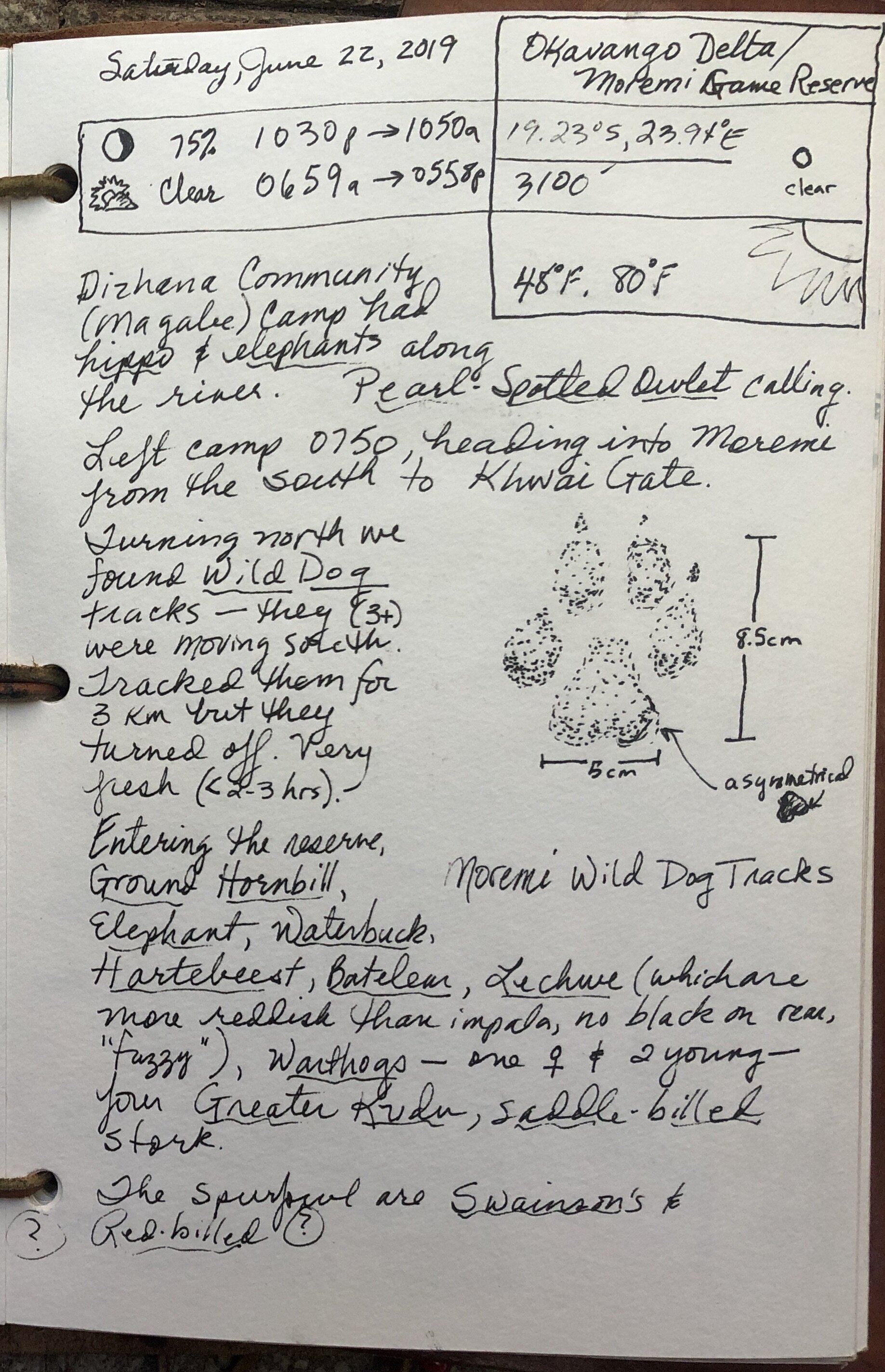
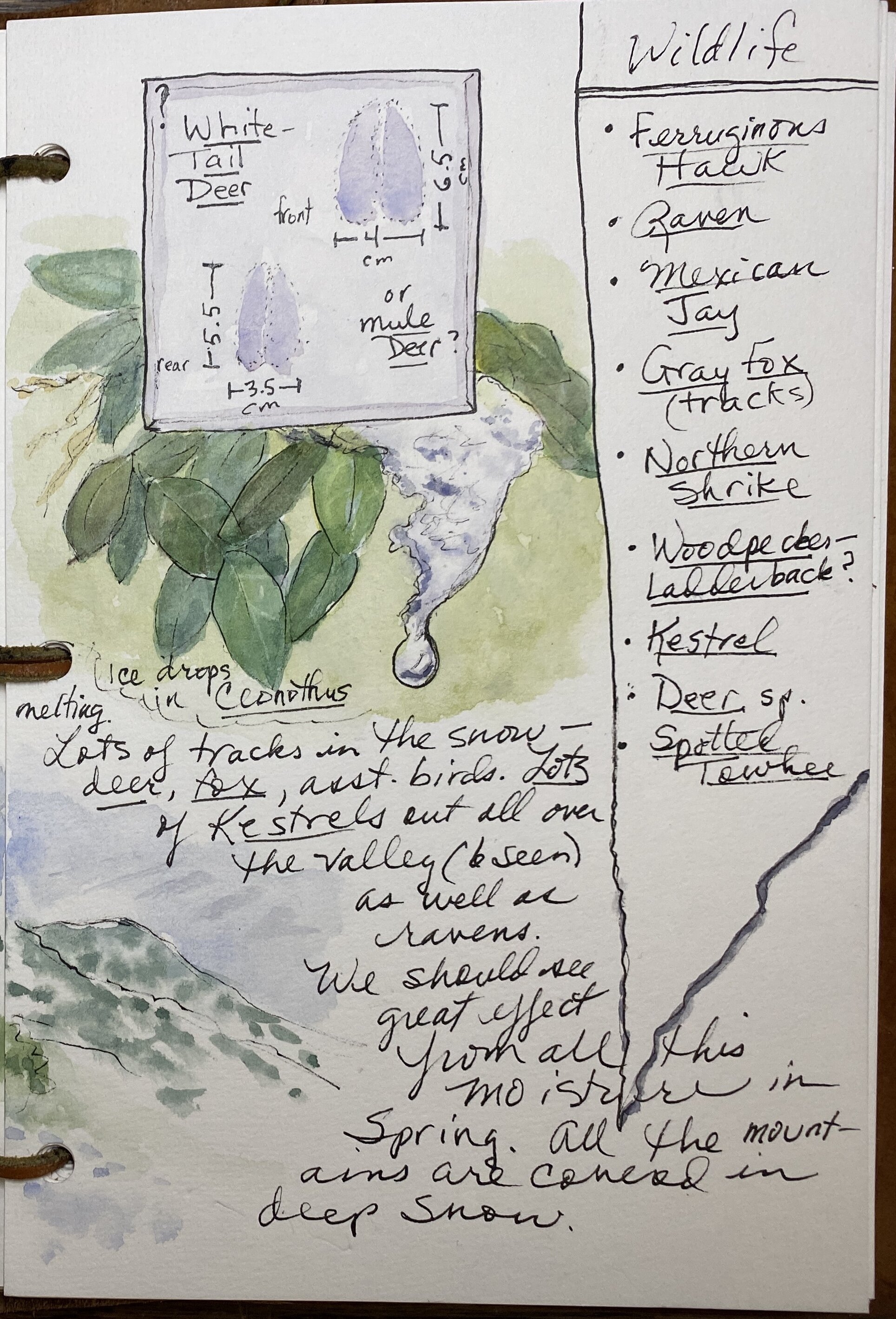
You can find my list of minimalist colors and tips on color mixing here: https://www.exploringoverland.com/field-arts-tutorials-list/2020/7/5/minimalist-watercolor-for-nature-journaling
ROSEANN’S DEMO IMAGES FROM THE WORKSHOP:
Mountain lion track (southern Arizona).
Wild Dog tracks (Botswana, Okavango Delta).
Mountain lion tracks (southern Arizona).







